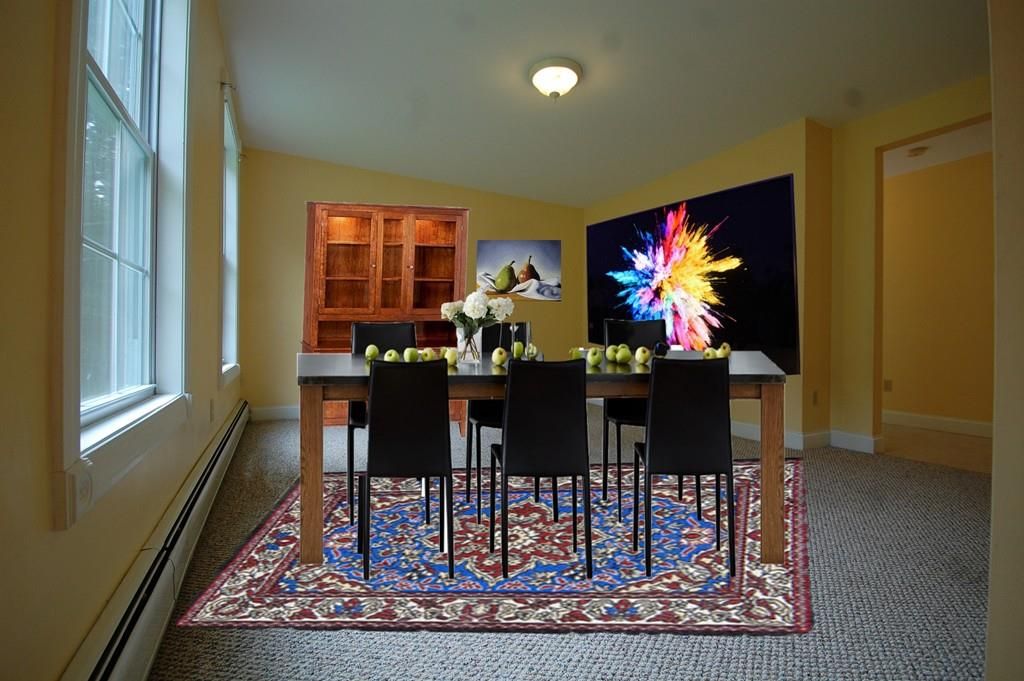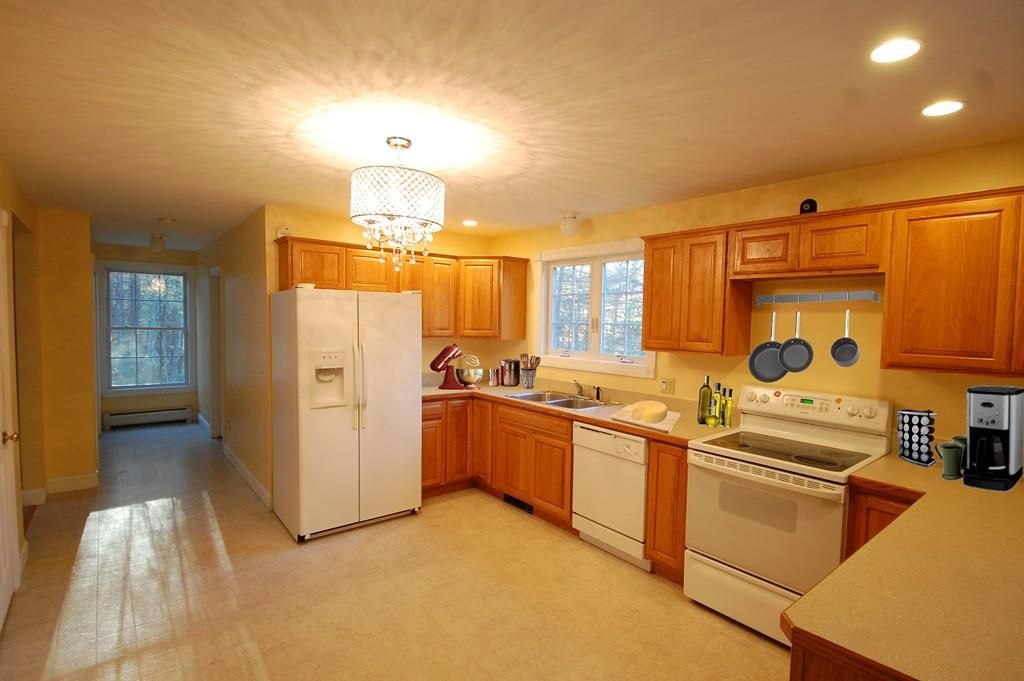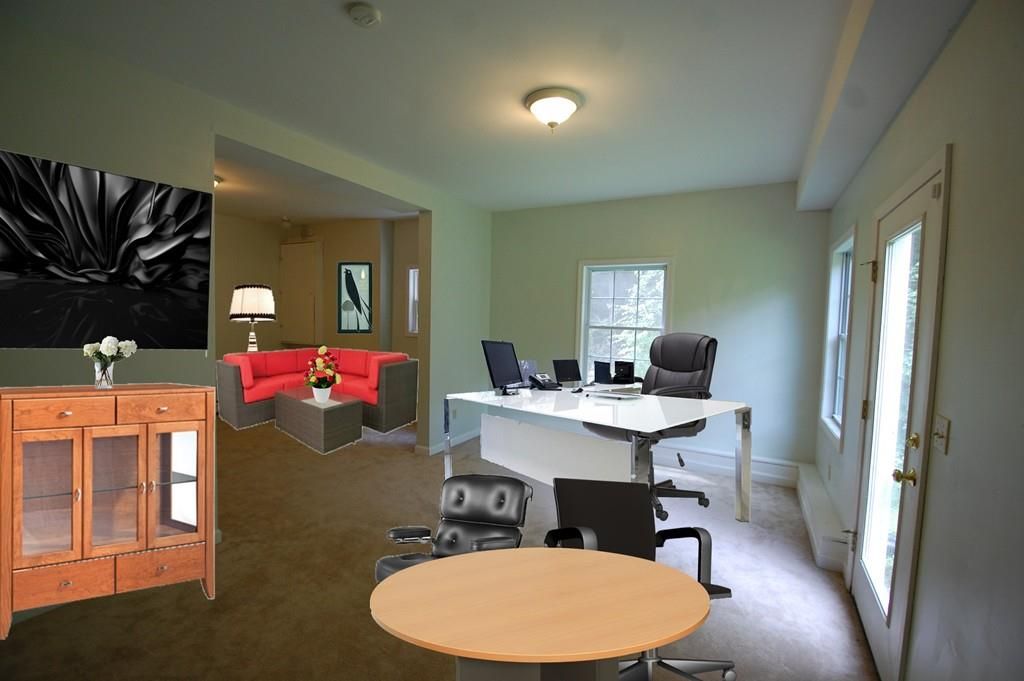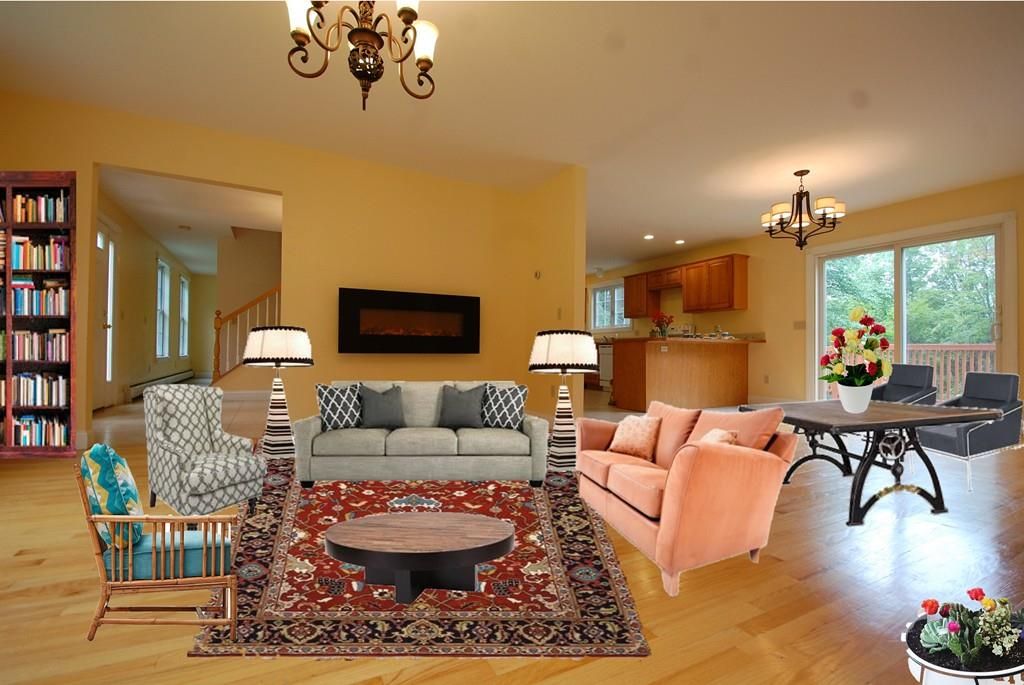True real estate practitioners and photographers know that you can’t just Photoshop out the brown grass or ugly power lines in a listing’s photos. There’s major liability if you misrepresent the property you’re trying to sell. You already know that. But what about artificially adding in elements? Clients often stage homes to give them that ready-to-move-in feel. Staging gives potential buyers a chance to visualize what can fit into a space and at some price points is expected. The rise of virtual staging software and augmented reality apps speak to the power of staging.
However, virtual staging is best left to buyers to pursue on their own. Virtual staging in images of an actual home for sale is a big no-no. Surely no one would really use faked photos for a professional listing though, right?
Think again. We invite you to soak up this unintentionally hilarious listing in Massachusetts, featuring fake staging, ambitious proportions, and impossible furniture angles.
While the home looks perfectly normal and real from the outside, treat yourself to a journey of the interior:

Behold, a rug to make even non-OCD folks cringe. The other pieces are pretty convincing, and they would have gotten away with it too if it wasn’t for that meddling rug angle.
While the virtual additions may be well-intentioned, this visual trickery makes it difficult to tell what’s truly included in the house. Is that built-in cabinet really there, or is it more Photoshop magic?
The kitchen seems pretty harmless in terms of fakery, but honestly, it’s a little hard to tell what’s included or how the physics work properly. You have to squint a bit to discover that you’ll need to install your own pot and pan rack (and 10-pound wheel of cheese), setting false expectations for buyers.

If a buyer falls in love with an element that was artificially added, a real-life tour could lead to heartbreak (not to mention legalities around what was conveyed).
You’re not doing future homeowners any favors by faking the inside. Staging gives potential buyers a chance to visualize what can fit into a space. Digitally displaying furniture at wonky angles and haphazard proportions doesn’t give an accurate depiction of the home.

This example may be eye-wateringly laughable, but fudging details about the home you’re trying to sell has serious negative implications. Even if adding elements is meant to be helpful, it is dishonest. Especially when it’s done this poorly.
Include real pictures, and let potential buyers play around with augmented reality and digital design. Providing dimensions of rooms would be more helpful than ‘shopping in fake furniture.
Editing photos for better lighting is okay, but removing or adding elements reduces the integrity of your listing. Avoid a world of headache and potential litigation by accurately representing the property. If you can’t legally edit items out of listing photos, can you legally edit items into them?

